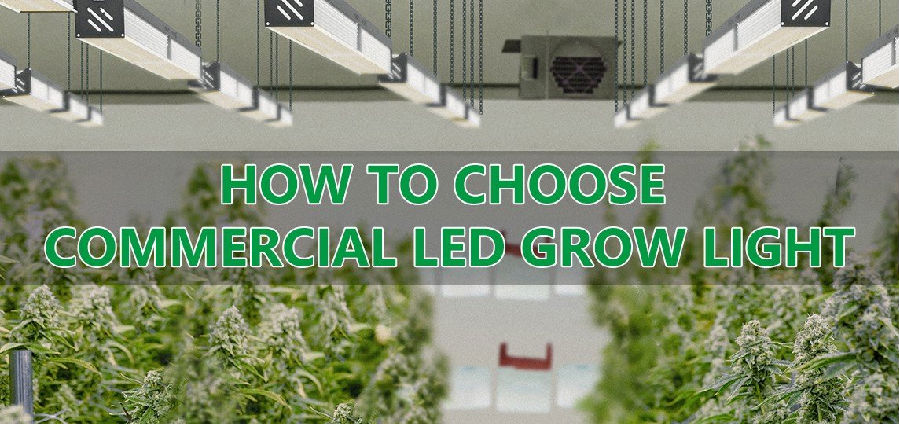
Light is essential for all forms of life on Earth. Sun, the pivotal star in our galaxy The Milky Way, is the source of required light, essential to keep life sustainable on our planet. Autotrophs, the organisms which can produce their food and energy, require ample amounts of light for healthily sustaining their lives. Plants fall in the category of autotrophs and are the most important living things on our planet. One way or another, plants form the backbone of food-chains. To produce food, plants use light from the Sun to perform photosynthesis; a process whereby sunlight, water, and carbon-dioxide are utilized to synthesize energy.
To ensure healthy plant growth and maximize yield, we need to ensure suitable conditions for the plants during their lifetime. One of these conditions is the provision of an ample amount of appropriate light, which the plants can utilize to assimilate food. Our specialty is to offer such lights to the growers, which may significantly assist them in obtaining a better crop; be it an indoor-farm, a greenhouse, a kitchen garden, or a mini-garden inside the home.
· Sources of Grow Lights for Commercial Indoor Farming
Raging from differences in the design of the source to the spectrum of light emitted, there is a vast variety of grow light sources that are available at the disposal of contemporary growers. The most commonly utilized sources, when it comes to commercial cultivation, are the High-Pressure Sodium (HPS) light and the Light-Emitting Diodes (LEDs). Some features of both these lighting sources are detailed below;
1. HPS Lights
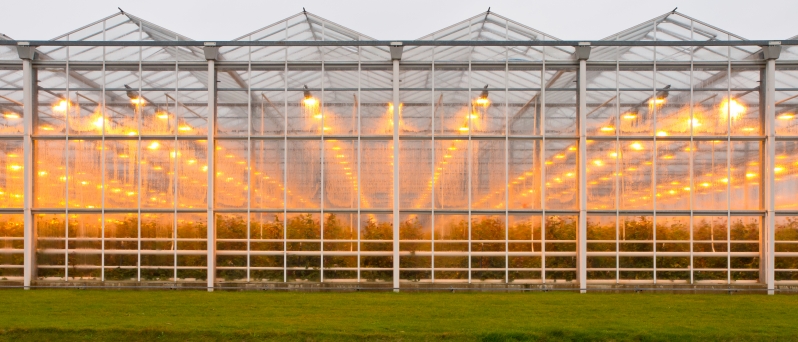
HPS lights possess an arc tube of sodium metal and aluminum oxide in a vaporized form. The high voltage applied to the tube causes the plasma inside it to glow a bright yellowish color. HPS lights emit light in a limited spectrum, where the yellow and orange wavelengths are more prominent, and to introduce another part of the visible light spectrum, xenon or mercury must be introduced to the arc tube, which emits blue light.
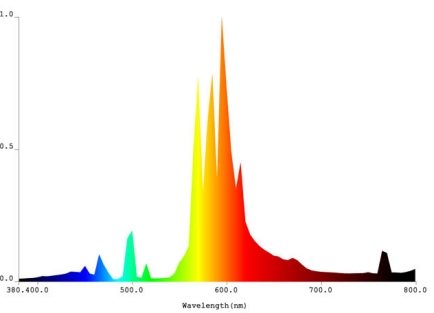
2. Full Spectrum LED grow light
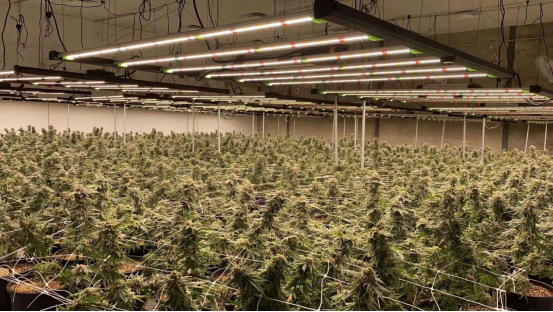
LEDs are p-n junction diodes, which are specifically designed to emit light when voltage is applied across the terminals. The voltage applied across the terminals of LEDs helps in the creation of electron-hole pairs, which get created depending upon the nature of the material. p-type materials produce holes while n-type materials are responsible for producing electrons. After the production of free electrons and holes, LEDs glow when energized electrons combine with holes and assume their low energy state. Due to the nature of the material used in the wafer of LEDs, LEDs can be made to emit the whole spectrum of light, while avoiding the unnecessary wavelengths and focusing on effective spectrum photosynthesis, the more useful ones.
As opposed to the light produced by HPS bulbs, LEDs specialized cultivation purposes are designed to emit more light in the bluish and reddish area of the spectrum of visible light. This blue light helps the plants to grow healthily, increases the development of leaves and roots, and helps strengthen the plants, particularly during the growth period. Red light is vastly responsible for the initiation of the flowering, which then goes on to produce fruits and vegetables etc.
The typical spectrum of visible light, emitted by RMC grow lights is given in the graph below.
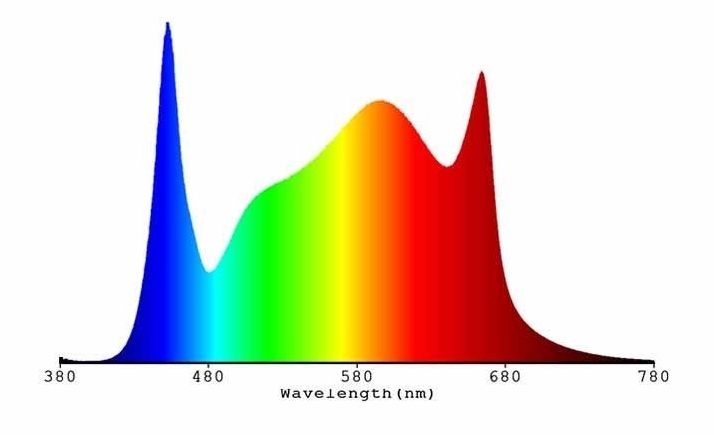
· Which light to choose?
HPS lights have been around since the 20th century and helping farmers for growing plants and cultivars of their choice using more electric power. However, the technology is out-dated and better options have become available for today's farmers. Due to being versatile in their functionality and design, LEDs are rapidly replacing conventional HPS lights. The reasons why a farmer should opt for LEDs rather than traditional light sources are listed below, which may help the reader understand how superior modern LED technology is superseding conventional light sources.
1. Spectrum – LEDs are made to emit wavelengths of any desired color from the visible light spectrum, while HPS lights have limitations in this regard. LEDs specified for cultivation emit light that is helpful through all developmental stages of plants.
2. Cycling – LEDs are pretty useful if their application requires constant turning on and off, with no warm-up time required. HPS lights may not be helpful in this regard as they may fail or riffle in such applications.
3. Dimming – LEDs can be easily dimmed according to the requirement of the plants. HPS lights may prematurely fail if subjected to continuous dimming, as magnetic or electric ballasts are required for the job.
4. Directionality – LEDs typically emit light for 180 degrees while HPS bulbs emit light for 360 degrees by design. For targeted areas and high efficiency, LEDs prove advantageous.
5. Efficiency – LEDs are very efficient and usually exhibit above 50% input-output efficiency. Being omnidirectional, losses associated with HPS bulbs are high that need more electricity consumption.
6. Heat Emission – LEDs emit virtually no heat or if they produce remains often affordable for plants growth while roughly 15% of the power in HPS is lost due to heat emission.
7. Failure and Replacement – LEDs come in the form of a panel, and even if one or two LEDs fail, the rest of the device works properly. HPS lamps display an end-of-life phenomenon whereby the whole bulb fails and needs replacement. The LED replacement has a virtually little cost associated with replacements.
8. Lifespan – The lifespan of LEDs is longer than any other commercially available light source. Typically, LEDs last for 5-7 years, while HPS bulbs have a lifespan of 1-4 years.
9. Lifetime Costs – LEDs have a relatively high installation cost, but viewed through a wider lens, the overall cost of LEDs comes out to be lesser than that of HPS, as LEDs require very low maintenance costs and are extremely energy efficient.
· RMC Grow Light – Commitment to a Brighter Future
RMC Grow Light is dedicated to the provision of easy and affordable lighting solutions for indoor horticulture growers from large commercial growers to hobbyists globally, with warehouses stationed in United States, Europe and China. We are enthusiastic to develop more efficient lighting systems, which may assist cultivators in growing quality crops indoors with low light accessibility areas.